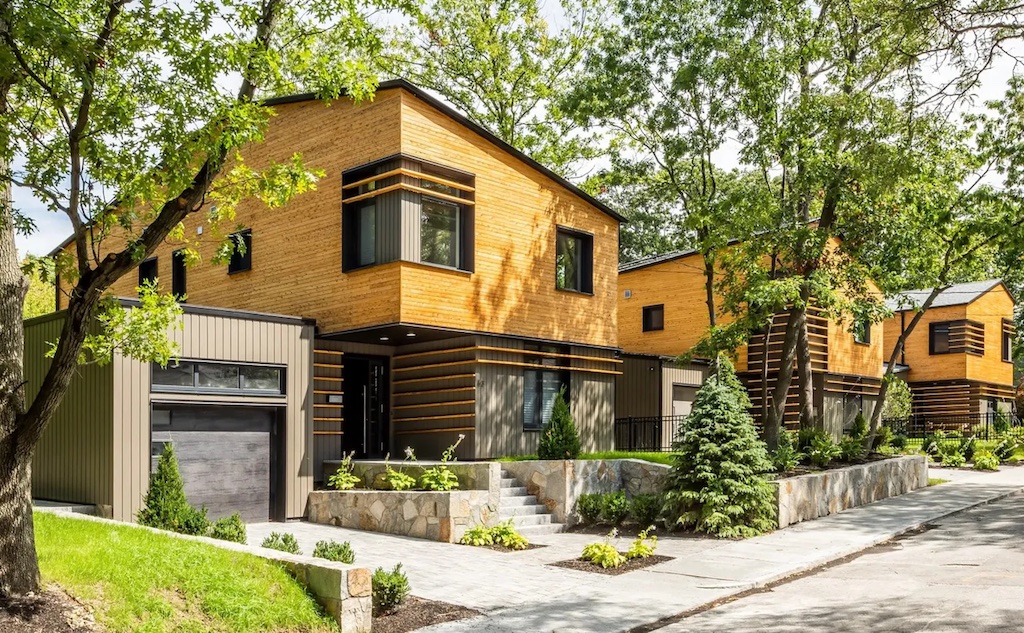West Roxbury, a community billed by Boston Magazine as checking "all the boxes," now has a unique, planet-friendly benchmark to add to the list.
The neighborhood has added three single-family homes that are internationally certified passive houses. The designation means the homes meet a "rigorous level of energy efficiency" with comfortability in mind, according to Phius, a Chicago organization that trains and certifies professionals in passive design.
The Brucewood by the Park development was designed by Boston's RODE Architects.
🗣️ Where does the majority of your home's electricity come from?
🔘 Statewide power company ⚡
🔘 Smaller local provider 🔌
🔘 Community solar 😎
🔘 Off-grid source 🔋
🗳️ Click your choice to see results and speak your mind
"This project celebrates what we believe in: that our work enhances a sense of place, and often the simplest forms can make the biggest statements. We're now exploring ways to bring this more into the mainstream in Greater Boston and beyond, including single-family, multi-family, and commercial developments," RODE co-founder Kevin Deabler said in a company press release.
The homes include a contemporary design that features white cedar siding. For energy efficiency, south-facing windows were built to best utilize sunlight. Airtight and well-insulated walls help to conserve energy throughout season changes. Those, and other design features, are part of the passive build concept, all per RODE.
"While sustainability has always been at the forefront of our approach to design, this project is a really unique and transformative application that has the ability to make an impact in our communities," RODE associate Mike DelleFave said in the press release.
This isn't the only passive project in Boston. City housing officials are in the midst of a six-phase project to bring more than 800 units in a federal public housing development up to passive standards. It's part of the housing authority's plan to have dirty-energy-free public housing by 2030.
The authority's housing plan is meant to benefit communities of color and low-income residents, according to NBC's 10 Boston.
The Brucewood Homes, though, come with a steep price tag.
The three RODE abodes are each 2,700 square feet and were sold for $1.4-$1.5 million apiece before they were completed. They each have four bedrooms and three bathrooms, according to Boston.com. The homes, while a bit boxy, look modern and attractive from the outside in a photo shared by RODE.
They are part of a neighborhood that Boston Magazine said boasts "post-war ranch houses, an upscale grocery store, and even an Italian steakhouse."
The efforts from Boston are evidence that homes can be built throughout a cityscape and suburbia to maximize sunlight, geometric design, and other natural resources.
Elsewhere, other architects are using similar principles to achieve comfort, even in scorching hot deserts in India. A girls school there is an oasis of cool design and learning.
The goal in both locations is to conserve energy and reduce air pollution with modern, comfortable designs.
"Brucewood Homes demonstrates our commitment to collaboration, craftsmanship, and pushing the boundaries to design buildings that address the issues of climate change," Deabler said in the RODE press release.
Join our free newsletter for easy tips to save more, waste less, and help yourself while helping the planet.









